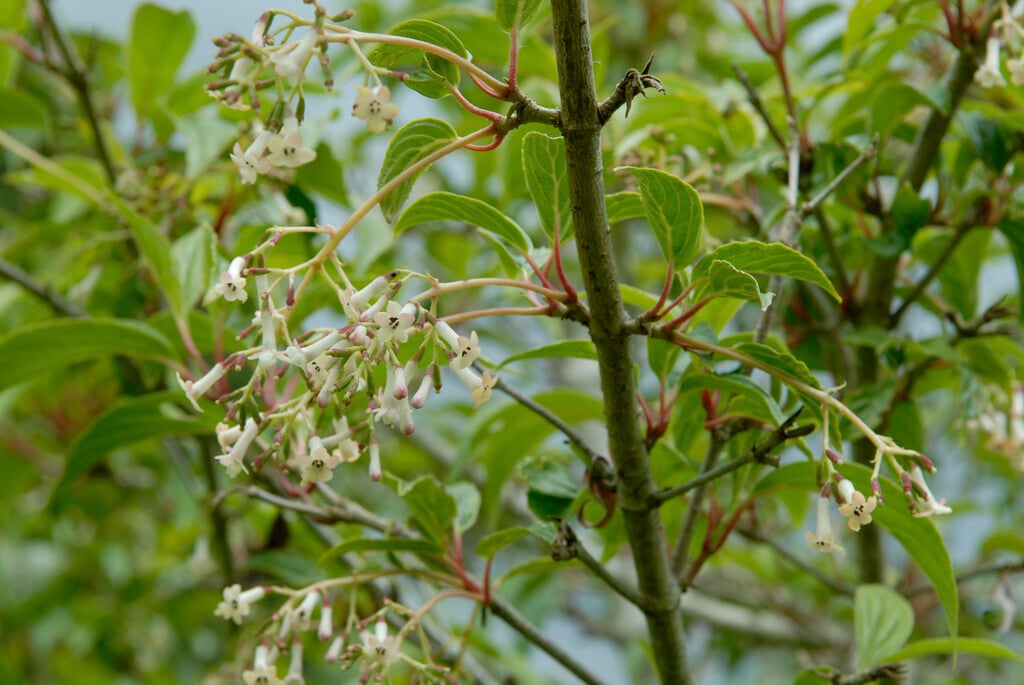Viburnum erubescens
A deciduous or semi-evergreen shrub to 3m high, with elliptic, serrated green leaves held on purplish stems. Delicate, hanging clusters of small, fragrant white flowers flushed with pink, that are tubular at the base and flared at the tips, appear with the leaves in spring. These are followed by small oval berries that turn red and then black as they mature
Size
Ultimate height
2.5–4 metresTime to ultimate height
5–10 yearsUltimate spread
1.5–2.5 metresGrowing conditions
Moisture
Moist but well–drainedpH
Acid, Alkaline, NeutralColour & scent
| Stem | Flower | Foliage | Fruit | |
| Spring | White Pink | Green | ||
|---|---|---|---|---|
| Summer | Green | |||
| Autumn | Green Orange Red | Red Black | ||
| Winter | Black |
Position
- Full sun
- Partial shade
Aspect
East–facing or South–facing or West–facing
Exposure
Sheltered Hardiness
H4Botanical details
- Family
- Viburnaceae
- Native to GB / Ireland
- No
- Foliage
- Deciduous or Semi evergreen
- Habit
- Bushy
- Potentially harmful
- Fruit are ornamental - not to be eaten. Wear gloves and other protective equipment when handling. Pets: Fruit are ornamental, not to be eaten - see the HTA guide to potentially harmful plants for further information and useful contact numbers
- Genus
Viburnum can be deciduous or evergreen shrubs with opposite, simple or palmately lobed leaves and clusters of small, often fragrant white or pink flowers, followed by red, blue or black berries
- Name status
Correct
How to grow
Cultivation
Grow in any moderately fertile, moist but well-drained soil in full sun or part shade. May need protection in cold winters
Propagation
Propagate by seed, sown in a cold frame in autumn, by semi-ripe cuttings in summer, or by grafting in late summer or winter
Suggested planting locations and garden types
- Cottage and informal garden
- Wildlife gardens
- Low Maintenance
- Flower borders and beds
Pruning
Minimal pruning required, if necessary prune immediately after flowering, though this will prevent development of berries
Pests
May be susceptible to aphids and viburnum beetle
Diseases
May be susceptible to Phytophthora, honey fungus, grey moulds and leaf spot
Love gardening
Sign up to receive regular gardening tips, inspiration, offers and more
View our Privacy Policy
Get involved
The Royal Horticultural Society is the UK’s leading gardening charity. We aim to enrich everyone’s life through plants, and make the UK a greener and more beautiful place.
